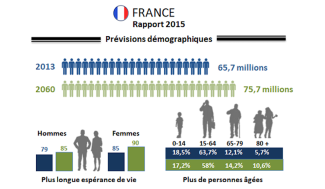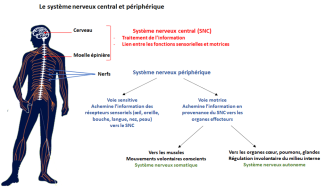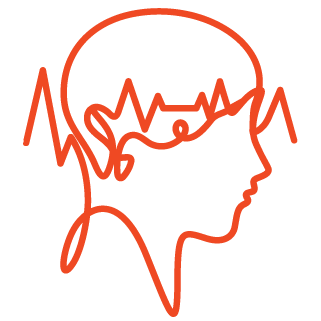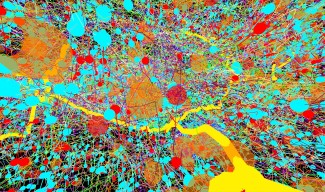Neurological diseases involve a malfunction of the central or peripheral nervous system. These diseases can be genetic or idiopathic in origin, or can be caused by trauma. They can also present with psychiatric symptoms.
An estimated 6.8 million people die from neurological disorders each year, and the proportion of people suffering from these disorders is proportional to the percentage of the population aged over 65.
This percentage is rising steadily, and it is estimated that by 2060 the over 65s age group will account for 17.8% of France’s population.
The aging of the population and the increasing prevalence of neurological diseases have prompted large-scale investment by governments into understanding and fighting nervous system disorders. The focus of medical research is on prevention, treatment and personalized medicine.

Population projections for the incidence of neurological diseases (2015 report)
Addressing the challenges
To address these challenges, Paris Brain Institute, with its unique ecosystem combining basic and clinical research, cutting edge, innovative technological facilities, and close partnerships with entrepreneurs, is able to develop an optimal understanding of the nervous system and how to treat and manage nervous system conditions.
Research by Paris Brain Institute focuses specifically on chronic, inflammatory and traumatic neurological diseases of the central nervous system. In other words, diseases that originate in the brain and spinal cord.
Some nervous system conditions also have effects on the peripheral nervous system, particularly on motor skills and sensitivity. They can sometimes even have longer-term consequences for autonomic functions such as breathing.

Understanding the difference between the central and peripheral nervous systems
Neuroscientists, psychiatrists and neurologists are working together to conduct world-class, state-of-the-art research to understand the healthy brain and the disease-affected brain, and to help new medical treatments and devices to become available sooner.
Neurodegenerative diseases
Neurodegenerative diseases are diseases of the central nervous system characterized by the progressive degeneration of neurons – neurodegeneration. Because these neurons are very non-renewable, their loss leads to irreversible disorders that worsen over time.
While there is currently no cure for these diseases, treatments to slow progression or relieve symptoms are available.

Are neurodegenerative diseases hereditary? What are the environmental factors? What are the most common neurodegenerative diseases?
Click hereRare neurological diseases
A disease is considered rare when it affects fewer than 1 in 2,000 people. More than 7,000 rare diseases – including around 800 neurological diseases – have been identified so far, and new ones are identified every week.

These conditions tend to exhibit a wide variety of clinical signs that differ from one disease to another, but also between two patients with the same disease. This variability makes it difficult to diagnose the conditions, with diagnosis coming on average 5 years after the onset of symptoms in 25% of cases. This is particularly true for non-hereditary conditions, which account for 20% of all conditions.
Neurological diseases researched at Paris Brain Institute
- Alzheimer’s Disease
- Epilepsy
- Parkinson's disease
- Plaque Sclerosis (SEP)
- Charcot’s Disease — ALS
- Huntington’s Disease
- Dystonia
- Progressive Supranuclear Palsy (PSP)
- Prion Diseases
- Ataxia
- spastic paraplegia
- Brain Tumours
- The Cerebral Vascular Accident (Stroke)
- Spinal cord injuries
- Head injuries
- Fronto-temporal degeneration (FTD)
Support Paris Brain Institute
If you liked this content and it helped answer your questions, please consider supporting Paris Brain Institute.









